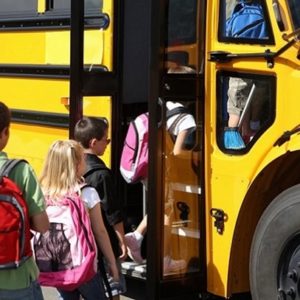Pennsylvania schools are the third safest in the country to reopen for in-person learning, according to a study published this week by WalletHub.
The study comes as schools across the country are still grappling with decisions related to school safety in light of COVID-19, and as some students and teachers struggle with hybrid or fully virtual learning. As the country begins to experience colder weather and the beginning of flu season, experts are warning of a potential resurgence of virus cases – but at the same time, the CDC has stressed the value of in-person learning, saying that long-term distance learning can negatively impact students’ academic, social, and emotional development.
The study ranks the 50 states by two different metrics: risk of COVID-19 infection, and health and financial infrastructure. Pennsylvania ranked 6th on both metrics, which placed the state at 3rd overall safest state to reopen schools.
Wallethub combined research from the U.S. Census Bureau, American Academy of Pediatrics, COVID Tracking Project, the National Center for Education Statistics, and others to determine the rankings. Researchers took into account statistics like child COVID-19 cases per 100,000, teacher-to-student ratios, rates of public mask usage, and total education spending per student. Pennsylvania tied for second place in lowest share of children living in crowded housing, and tied for first place in lowest rate of child COVID-19 deaths per 100,000.
However, some Pennsylvania parents remain skeptical, suspecting that without a vaccine, this measure of safety may only be relative.
Kristine Kennon, mother of a child in a Pennsylvania public school, said that without a vaccine, she’ll keep her daughter learning from a distance as long as there’s an online option.
“Mainly, the idea of opening schools without a vaccine or course of treatment for students and teachers doesn’t make any sense to me,” Kennon said. “It stands to reason that if you don’t have a course of treatment for this virus, that is not cured or eradicated, and we know it can be spread by children and brought back into the community – then why would we put everyone at risk?”
Kennon also pointed out that some universities, including Temple University in Philadelphia, have been forced to stop in-person learning after experiencing spikes in COVID-19 cases on campus.
However, the case for full reopening may be bolstered in some parts of Pennsylvania, especially in less densely populated parts of the state, as families find distance learning a difficult and sometimes impossible adjustment. Community members of the Pennsbury school district in Bucks County gathered Friday to protest distance learning and demand the district provide metrics for when schools can reopen for in-person learning.
“Kids need to be kids, and parents need to go to work,” said Diana Donnelly, a Bucks County parent who organized the protest. Donnelly’s children are enrolled in Catholic school, and are back in their school buildings full-time.
“[My kids] are happy; they have that structure, they can see their friends,” Donnelly said on Friday. “It’s as normal as it can be, except they have to wear a mask, and stagger times in the hallways. And everyone is following the rules – it’s been a month, and everything has been fine.”
The study provides testimony from some experts to add more context to the results. John Y. Jones, Associate Professor of Education at Truman State University, said that no matter how schools approach the problem, the biggest challenge is making sure students with less affluent families don’t fall behind.
“Families of means, and those able to work from home, are much better positioned to keep their kids learning even if every school in America closes,” Jones said. “Parents who work outside the home and do not have reliable childcare will be forced to scramble, adding to their already elevated stress and anxiety. If schools open, then close, working families get hit harder. If schools use a hybrid system, working families get hit harder. If schools open and kids or teachers start getting sick, working families get hit harder. Any way you cut it, kids in working families are at higher risk of falling behind and staying behind.”

